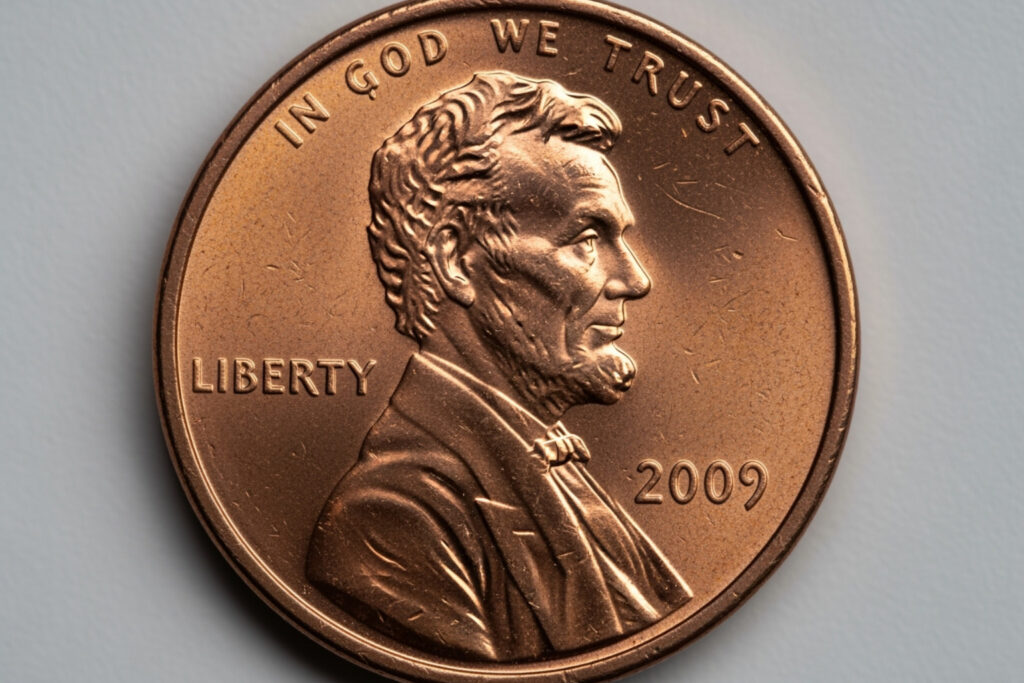The Hidden Treasure in Your Pocket Change
Focus Keyphrase: 2009 penny value no mint mark
Why this topic on a wellness site? At Beyond Beauty Lab, we spotlight mindful micro-hobbies that nurture calm, focus, and curiosity. Coin hunting, practiced with intention, mirrors the same slow, attentive approach we bring to sustainable skincare and everyday wellness, turning a moment with pocket change into a mindful pause.
2009 penny value no mint mark can range from one cent to over $325, depending on the specific commemorative design, condition, and presence of minting errors. Here’s what your 2009 penny with no mint mark might be worth:
Quick Value Guide:
- Circulated condition: Face value (1 cent)
- MS65 condition: $10 to $12 for most designs
- MS67 condition: $150 to $325 depending on design
- With errors: $5 to $50 or more for doubled die varieties
It’s easy to view pennies as a nuisance in your pocket, especially newer ones that you figure won’t hold much value. But 2009 marked something special: the 200th anniversary of Abraham Lincoln’s birth.
The U.S. Mint did something unprecedented that year. Instead of releasing just one penny design, they created four different commemorative designs representing stages of Lincoln’s life. Over 2.3 billion of these special pennies were minted, yet many people don’t realize they might be carrying around coins worth far more than their face value.
What makes these pennies particularly interesting is that those with no mint mark came from the Philadelphia Mint. While 129.6 million pennies covering all designs were struck there, a relatively low number, most circulated coins are only worth face value. However, coins in excellent condition or with rare errors can sell for hundreds of dollars.
The key is knowing what to look for. Whether you’re someone who appreciates finding hidden beauty in everyday objects or you’re simply curious about that handful of change, understanding these three valuation methods can help you find if you’re holding a small treasure.
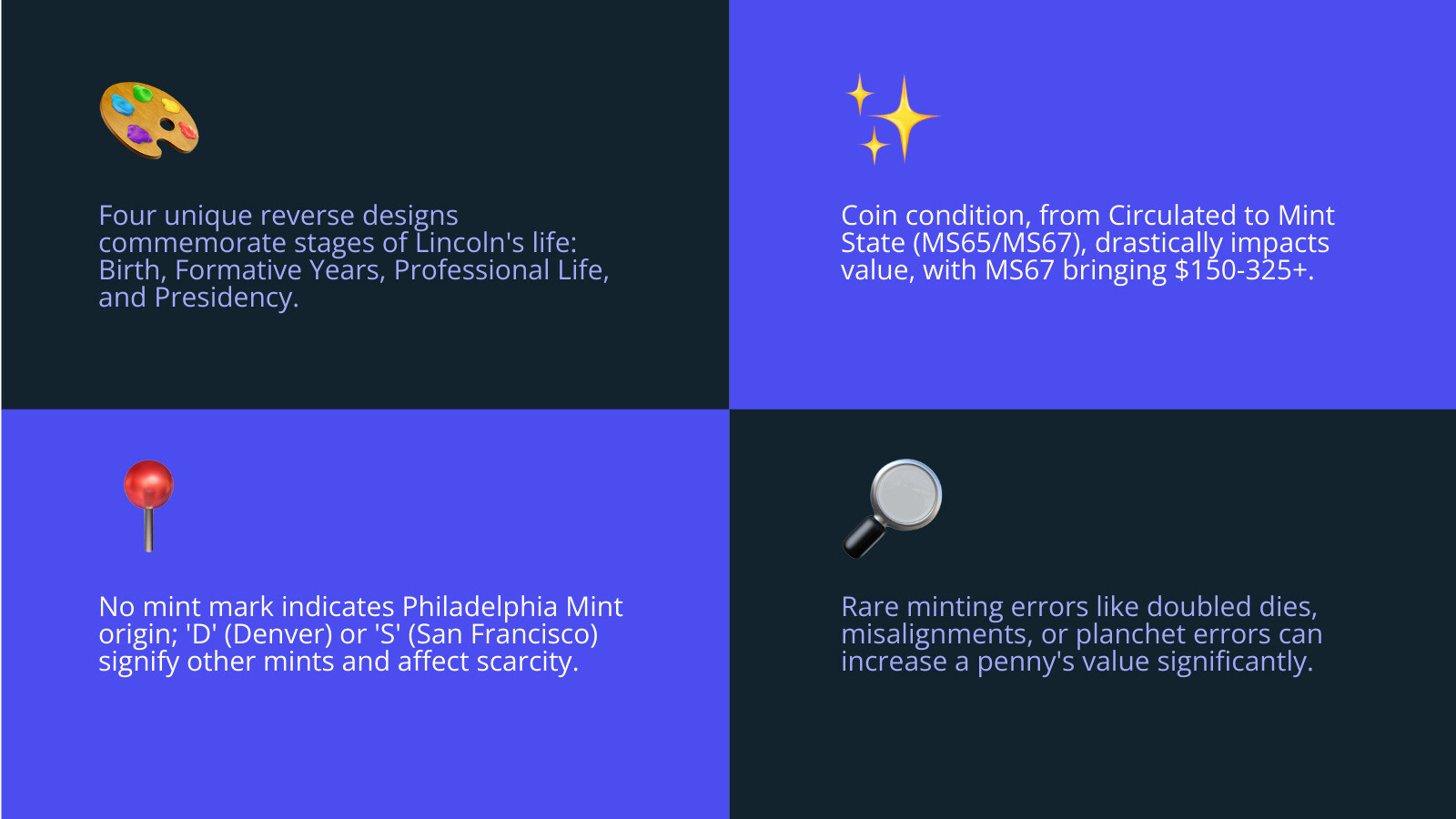
Method 1: Identifying the Four Commemorative Designs
Something magical happened in 2009 that coin collectors and everyday Americans still talk about today. The U.S. Mint decided to do something they’d never done before: release four different penny designs in a single year to celebrate Abraham Lincoln’s 200th birthday.
Think about it: the Lincoln penny had kept basically the same reverse design since 1959 with the Lincoln Memorial. Then suddenly, every few months throughout 2009, a brand new design appeared in your pocket change. It was like finding little pieces of history telling Lincoln’s life story, one penny at a time.
Here’s what makes these coins special for your 2009 penny value no mint mark search: if your penny doesn’t have a small letter on it (like a “D” or “S”), it came from the Philadelphia Mint. The Philadelphia Mint has a long tradition of not putting mint marks on their coins, which is why you see that blank space.
Now, Philadelphia minted about 129.6 million of these commemorative pennies across all four designs. That might sound like a lot, but it’s actually pretty low compared to typical penny production. Most are still worth just one cent in your pocket, but the right condition or design can change everything.
Let’s walk through each design and find what treasures might be hiding in your change jar.
Birth and Early Childhood in Kentucky (Log Cabin)
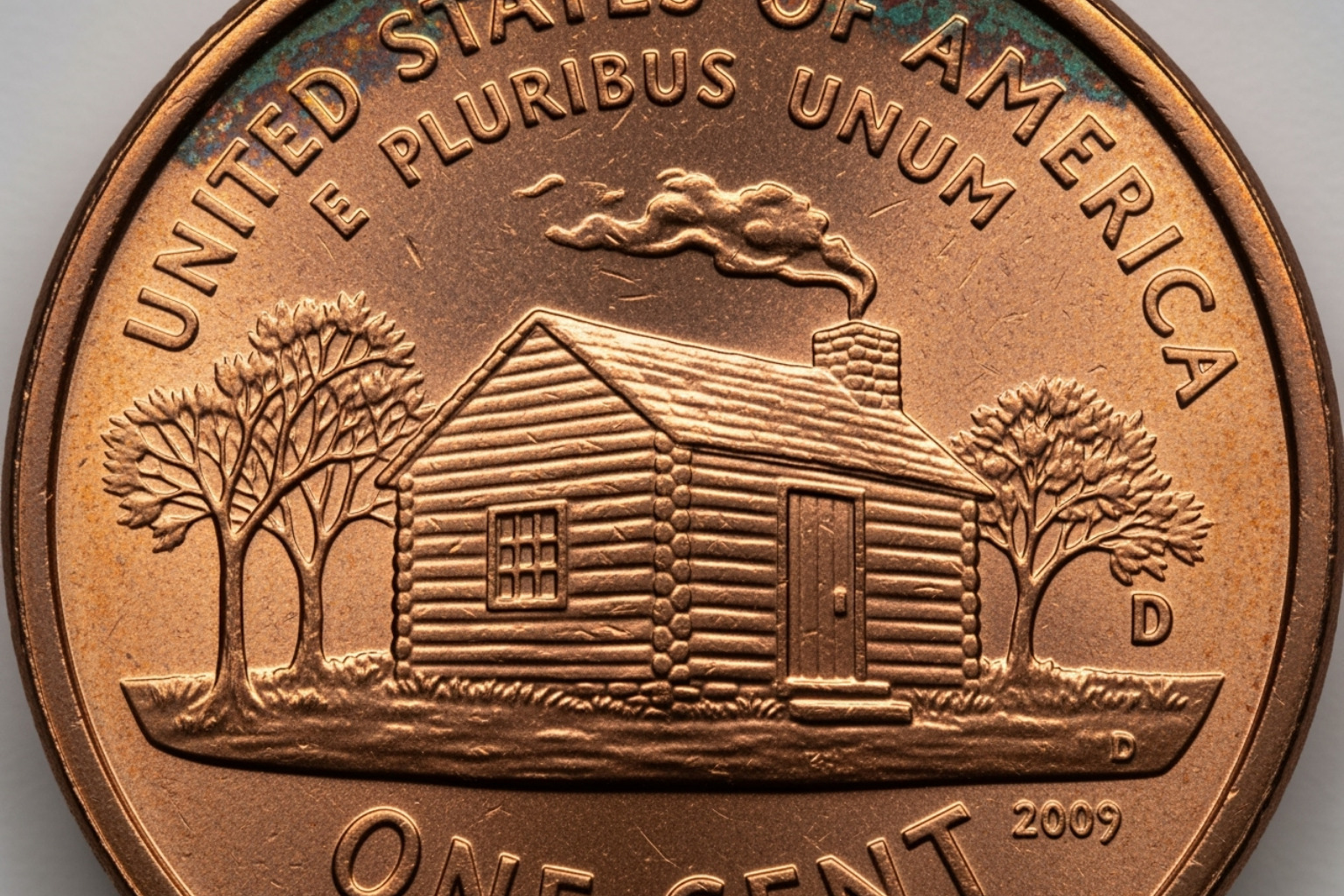
The first design released in early 2009 shows a simple log cabin, the kind of humble beginning that reminds us how extraordinary people can come from the most ordinary places. It’s a beautiful representation of Lincoln’s birth and early childhood in Kentucky.
When you’re checking your 2009 penny value no mint mark for this log cabin design, here’s what to look for: Philadelphia minted about 284,400,000 of these, making them fairly common in circulation where they’re worth their face value of one cent.
But condition changes everything. If you find one that looks like it never left the mint, you might have something special. An MS65 grade (that’s mint state with very few marks) can be worth around $12, while a pristine MS67 example can reach about $300. That’s quite a jump from one penny!
Formative Years in Indiana (Young Lincoln Reading)
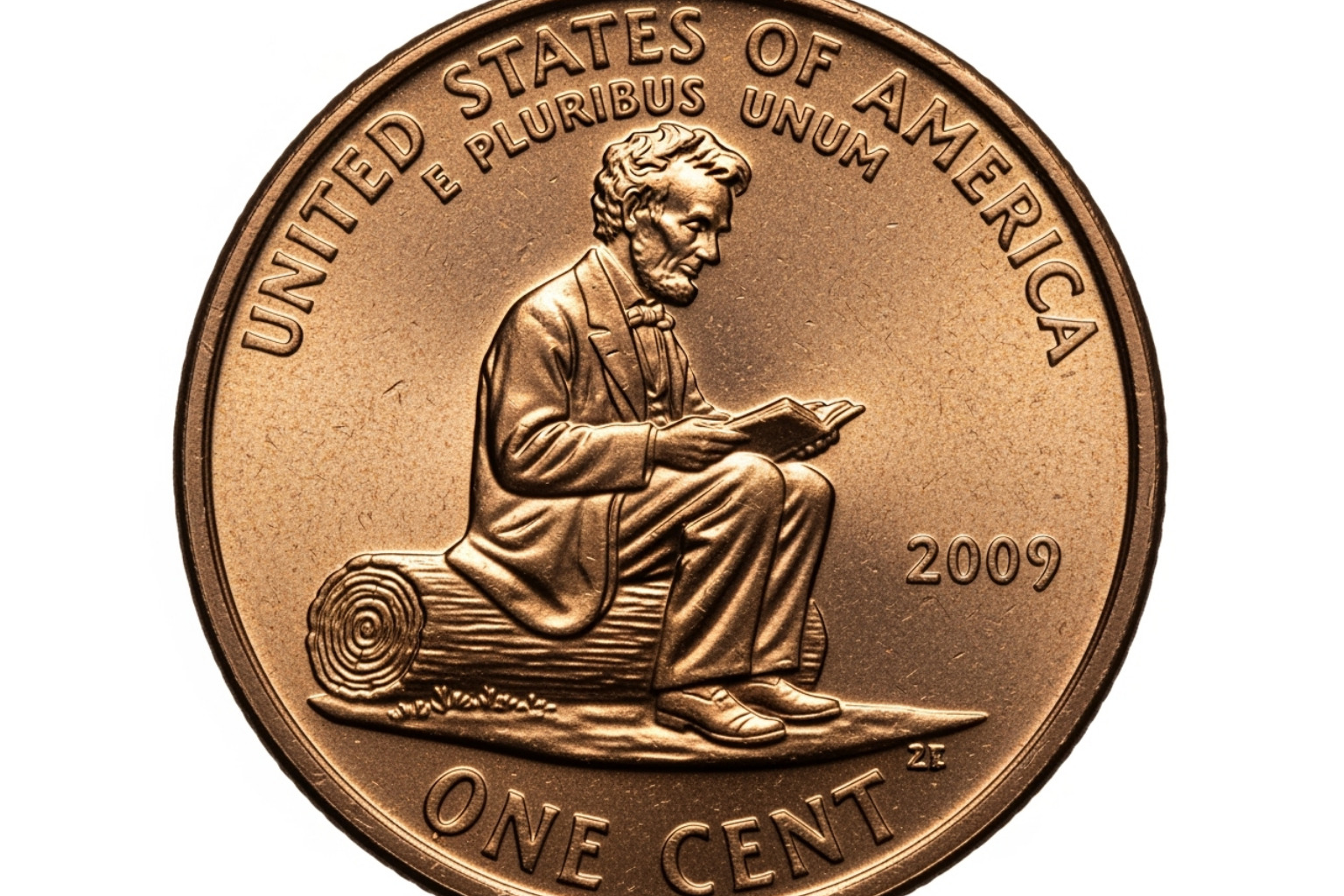
The second design captures something we absolutely love: a young Lincoln sitting on a log, completely absorbed in reading a book. This “Formative Years” design celebrates his time in Indiana and his passion for learning. There’s something deeply inspiring about seeing education and curiosity honored on something as everyday as a penny.
Philadelphia struck about 376,000,000 of these designs, making it the most common of the four. In circulated condition, you’re looking at face value, but the magic happens with uncirculated coins.
An MS65 grade typically brings around $10, while an MS67 specimen can be worth approximately $325, making this design one of the most valuable in top condition for the 2009 penny value no mint mark category.
Professional Life in Illinois (Lincoln the Statesman)
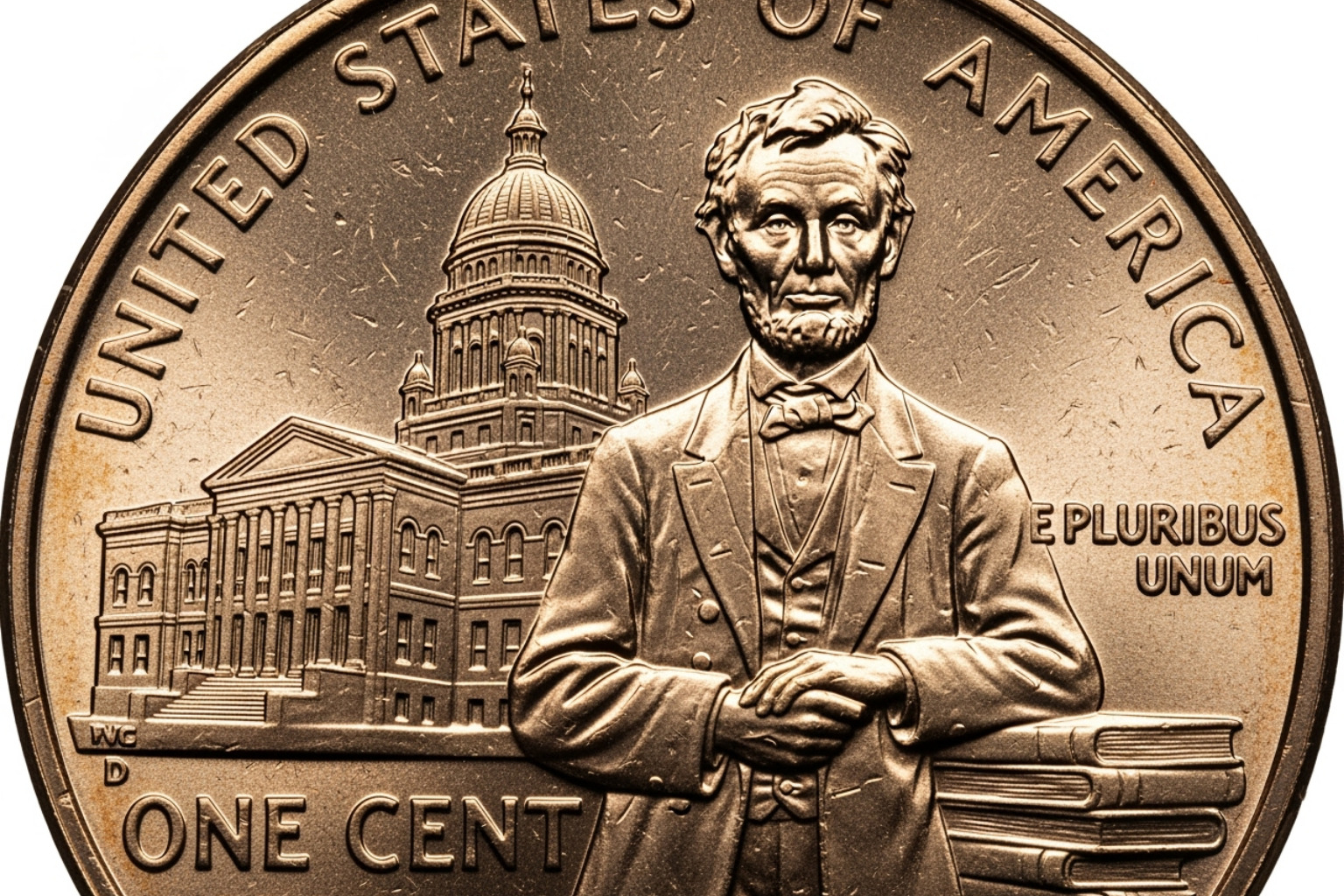
The third design shifts to show Lincoln as a young lawyer and politician, standing confidently before the Illinois State Capitol. It’s a powerful image that captures his rise from humble beginnings to respected statesman.
With a mintage of about 316,000,000 from Philadelphia, these are reasonably common in circulation at face value. However, high-grade examples tell a different story. An MS65 grade can bring around $12, while an MS67 example typically sells for about $160.
Presidency in Washington D.C. (Capitol Dome)
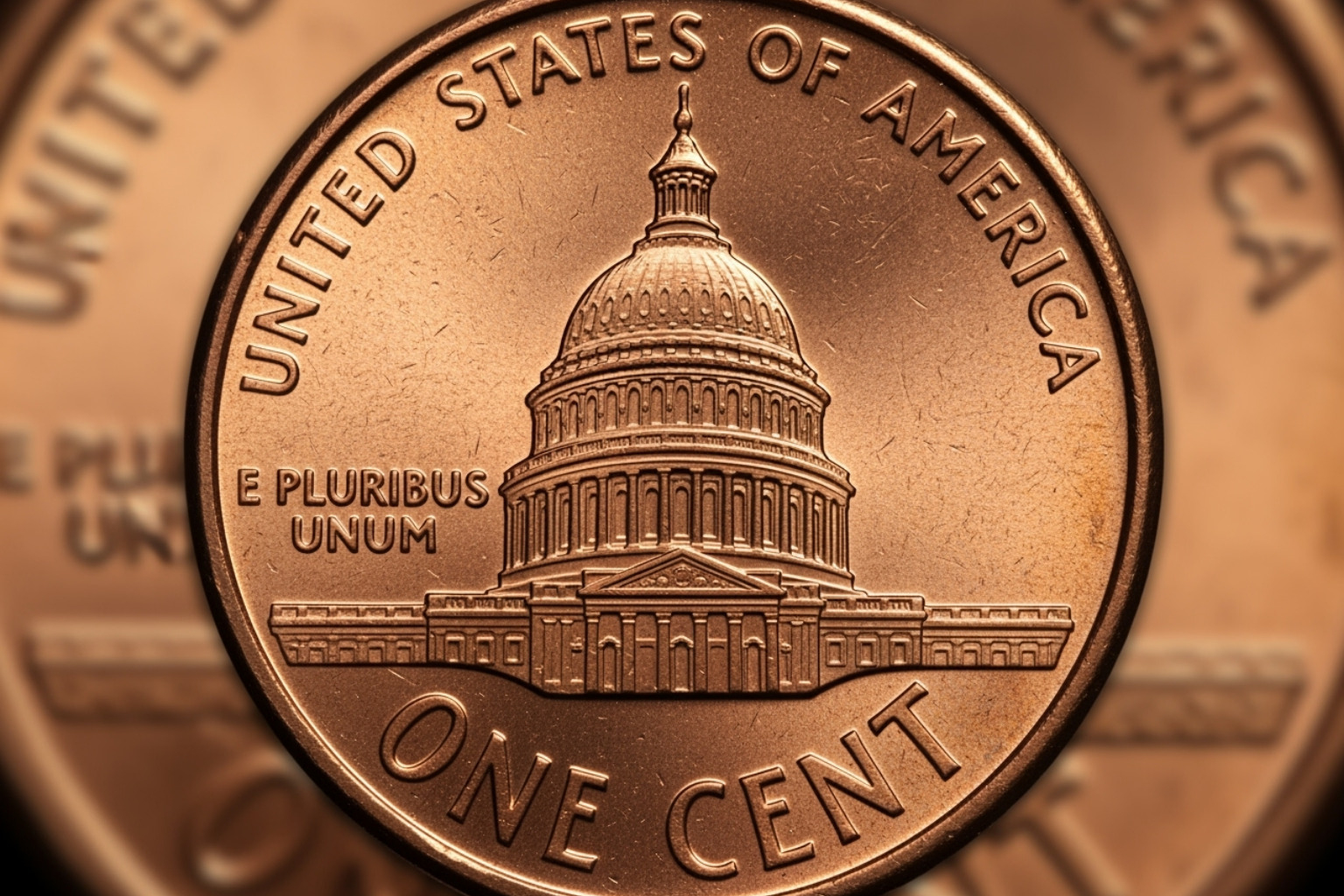
The final design shows the U.S. Capitol Dome under construction, symbolizing Lincoln’s presidency during the Civil War. It’s a fitting tribute to a leader who held the nation together during its most challenging time.
This design has the lowest Philadelphia mintage at approximately 129,600,000, making it the scarcest of the four for coins with no mint mark. Still, circulated examples are typically worth face value.
For uncirculated coins, an MS65 grade brings around $12, while an MS67 example can be valued at approximately $150. While valuable, it’s interesting that despite the lower mintage, it doesn’t command the highest prices in top grades.
Method 2: Grading Condition to Determine the 2009 Penny Value No Mint Mark
Picture this: you’ve just found two identical 2009 pennies in your change jar. One looks like it’s been through a washing machine cycle, while the other gleams like it just rolled off the mint’s production line. That difference in condition could mean the gap between one cent and several hundred dollars!
Coin condition is absolutely everything when it comes to determining value. The numismatic world relies on the Sheldon Scale, which grades coins from 1 (basically unrecognizable) to 70 (absolutely perfect). This isn’t just collector pickiness; it’s the universal language that helps determine what your 2009 penny value no mint mark might actually be worth.
Here’s where it gets interesting: coins fall into three main categories. Circulated coins have been out in the world, passed from hand to hand, showing wear and losing their original shine. Uncirculated coins (marked as “Mint State” or MS) never entered circulation and retain their crisp details and luster. Proof coins (PR) are the premium versions, struck twice with special care for collectors.
There’s one more thing to keep in mind about these 2009 pennies. Unlike older solid copper pennies, these are made of 97.5 percent zinc with just a thin copper coating. This zinc core means they can develop corrosion issues if stored improperly, which directly impacts their condition and value.
Estimating Circulated vs. Uncirculated Value
Let’s be honest: most 2009 penny value no mint mark coins you’ll find in everyday pocket change are worth exactly one cent. With billions minted, they’re not rare in circulated condition. But here’s where the treasure hunting gets exciting: if you spot one that looks mint-fresh, you might have struck gold (or copper-plated zinc)!
The magic happens in the uncirculated grades. An MS63 coin shows it’s uncirculated but has some minor contact marks or small imperfections. These typically run about $7 for all four designs. Step up to MS65, and you’re looking at a well-struck coin with original luster and only tiny flaws, worth around $10 to $12 across the board.
But MS67 is where values really take off. At this grade, we see dramatic differences between designs. The Formative Years penny can reach around $325, while the Birth and Early Childhood design might hit $300. Meanwhile, the Professional Life and Presidency designs settle in at $160 and $150 respectively.
The Role of Professional Grading Services
When you think you’ve found a high-grade coin, professional grading becomes your best friend. Think of PCGS (Professional Coin Grading Service) and NGC (Numismatic Guaranty Company) as the trusted experts who can authenticate and grade your coin with scientific precision.
It’s like getting a certificate of authenticity for a piece of art. These services examine every detail under magnification, assign an official grade, and seal the coin in a protective holder with their guarantee. This authentication process often maximizes your coin’s selling potential because buyers trust these impartial assessments.
If you believe you’ve found a pristine 2009 penny that looks absolutely flawless, professional grading could be worth the investment. For coins that might grade MS65 or higher, the grading fee often pays for itself through increased market value.
Want to dive deeper into how this process works? Check out this comprehensive guide to professional coin grading to understand what these experts look for when evaluating your potential treasure.
Method 3: Spotting Valuable Errors and Varieties
Here’s where coin collecting becomes a real treasure hunt! While knowing the design and condition matters, finding a rare minting error can turn your ordinary penny into something collectors will pay serious money for. These happy accidents happen during the minting process, and they’re often one-of-a-kind, making them incredibly valuable.
Think of it like finding beauty in imperfection, something we understand well in the wellness world. Sometimes the most interesting stories come from the unexpected quirks and variations that make each piece unique.
When you’re examining your 2009 pennies, grab a magnifying glass or coin loupe. Many valuable errors are practically invisible to the naked eye, so you’ll need to look closely to spot those subtle but significant details that could be worth real money.
Key Doubled Die Errors to Look For
Doubled die errors happen when the coin die shifts slightly during production, creating a doubled image on the finished coin. For 2009 penny value no mint mark collectors, certain doubled die varieties are particularly exciting finds.
The Formative Years “Extra Thumb/Finger” error is probably the most famous mistake from the 2009 series. Look carefully at young Lincoln’s hand holding the book on the “Formative Years” design. Some coins show doubling that makes it look like he has an extra thumb or finger, which is pretty wild when you think about it!
If you find one of these in your pocket change, you’re looking at around $5 in value. But if it’s in uncirculated condition, an MS64 example has sold for around $50. Not bad for a penny!
The Early Childhood “Doubled Logs” error is another keeper. On the log cabin design, check out the logs themselves, especially at the front corner where you can see the circular ends. Some coins show clear doubling on these log ends, and these varieties can be worth around $10 if the doubling is obvious.
Other doubled die locations worth checking include the Professional Life design’s columns on the Illinois State Capitol building and the Presidency design’s Capitol Dome details. While less common than the thumb error, any clear doubling on these features can add value to your coin.
Other Notable Errors and Their Impact on Value
Beyond doubled dies, several other minting quirks can boost your 2009 penny value no mint mark significantly.
Satin Finish coins deserve special attention. The Philadelphia Mint produced special “satin finish” versions of these pennies for collector sets. They have a distinctive, slightly frosted look compared to regular pennies. While technically not errors, they’re much rarer than circulation coins and can be worth several hundred dollars in top grades.
Planchet errors occur when something goes wrong with the blank coin before it gets struck. You might find clipped planchets, which are missing a chunk from the edge; lamination errors, where the metal layers separate; or even wrong planchet errors, where a penny design is struck on a blank meant for a different coin. The value depends on how dramatic and visible the error is.
Die cracks show up as raised lines on coins when the die itself develops cracks from wear. While common, unusual or significant die cracks can sometimes add a small premium to your coin’s value.
Finding these errors takes patience and a bit of luck, but the payoff can be substantial. The rarer and more dramatic the error, the more collectors will pay for it. You can see examples of valuable error coins to get a better idea of what to look for when you’re checking your own pennies.
Frequently Asked Questions about 2009 Pennies
You’re not alone if you have questions about these fascinating coins! We hear from people all the time who find these special pennies and want to know more. Let’s explore the most common questions about 2009 penny value no mint mark and what makes these coins so interesting.
Why are 2009 pennies special?
The year 2009 marked something truly extraordinary in American coinage history. These pennies weren’t just another year of regular production; they were created to commemorate Abraham Lincoln’s 200th birthday, making them the first pennies to honor this milestone.
What made them was the decision to create four unique reverse designs instead of the usual single design. Each design tells a story, walking us through Lincoln’s journey from his humble beginnings in a Kentucky log cabin to his presidency during one of America’s most challenging periods. This storytelling approach had never been done before with U.S. pennies.
The timing also worked in collectors’ favor. The 2008 economic recession meant fewer people were spending money, which led to reduced demand for new pennies. As a result, lower mintage numbers were produced compared to typical years. The Philadelphia Mint, for example, struck only about 284 million of the Birth and Early Childhood design, a relatively small number in the penny world.
What does “no mint mark” on a 2009 penny mean?
When you see a 2009 penny with no mint mark, you’re looking at a coin that was minted at the Philadelphia Mint. This follows a tradition that goes back generations. Philadelphia has been the “mother mint” of the United States, and coins from there traditionally don’t carry a mint mark.
This is quite different from coins made at other facilities. If you find a 2009 penny with a ‘D’ mint mark, it came from Denver, and these can sometimes be even more valuable than their Philadelphia counterparts. A 2009-D penny in MS68 condition with the Presidency design has sold for around $6,000!
Pennies marked with an ‘S’ came from San Francisco, but these were special proof coins made specifically for collectors. While beautiful with their mirror-like finish, they’re often worth less than ultra-high-grade circulation strikes because they were intentionally made in perfect condition for collector sets.
Understanding your coin’s origin helps you research its specific value and rarity within the broader 2009 penny family.
Are all 2009 pennies valuable?
Here’s the honest truth: most 2009 pennies are worth exactly one cent. While they’re historically significant and fun to collect, the majority you’ll find in your pocket change won’t make you rich.
The 2009 penny value no mint mark really comes down to three crucial factors working together. The specific design matters more than you might expect. Even among Philadelphia pennies, the Birth and Early Childhood and Formative Years designs command higher prices in top grades, sometimes reaching $300 to $325 in MS67 condition, while the Presidency design typically tops out around $150 in the same grade.
Condition is absolutely critical. A worn penny from circulation will almost always be worth face value, regardless of its design. It’s only when you find coins in uncirculated condition, those pristine MS65 to MS67 grades, that values jump to $10 to $325 depending on the design.
The real excitement comes with minting errors. These are the true hidden treasures that can turn an ordinary-looking penny into something worth $5 to $50 or more. The famous “extra thumb” error on the Formative Years design or doubled logs on the Birth and Early Childhood design can make even a circulated coin valuable to collectors.
So while checking your change is always fun, finding a truly valuable 2009 penny is like finding a four-leaf clover: special when it happens, but not something to count on!
Conclusion: Finding Beauty and Value in the Everyday
As we’ve explored together, determining the 2009 penny value no mint mark is like being a detective with a magnifying glass, combining historical knowledge with careful observation and just a dash of treasure-hunting excitement. We’ve found three essential methods: identifying the four unique commemorative designs that tell Lincoln’s life story, carefully grading the coin’s condition using professional numismatic standards, and spotting rare and valuable minting errors that can turn an ordinary penny into something extraordinary.
Here’s the honest truth: most 2009 pennies you’ll find tucked in your couch cushions or scattered in your car’s cup holder will be worth exactly one cent. But that’s what makes this hobby so delightfully unpredictable! The possibility of finding a pristine uncirculated example or a coin with that special doubled die error adds a spark of adventure to something as mundane as counting your change.
It’s fascinating how beauty and value often hide in plain sight, isn’t it? Sometimes we need to slow down, look a little closer, and truly appreciate the story behind seemingly ordinary objects. This reminds us of our approach at Beyond Beauty Lab, we believe in uncovering the inherent beauty and wellness potential that already exists within each of us, often through simple, mindful practices and a deeper understanding of what truly nourishes our bodies and souls.
The mindfulness required to examine a coin’s details mirrors the same attention we might give when choosing a sustainable skincare routine or exploring zero waste beauty options. Both require us to pause, consider quality over quantity, and appreciate the craftsmanship, whether it’s in a mint’s precision or a thoughtfully formulated plastic free cosmetics product.
So next time you spot a 2009 penny in your pocket change, take a moment. Really look at it. Notice Lincoln’s profile, identify which of the four life stages it represents, check its condition, and keep your eyes peeled for anything unusual. You might just be holding a small piece of American history that connects you to a hobby where curiosity meets the joy of finding.
Whether you find a valuable coin or simply gain a new appreciation for the artistry in everyday objects, you’ve enriched your perspective. And isn’t that a treasure in itself?
To continue exploring insights that improve your well-being and deepen your appreciation for the world around you, we invite you to Explore more wellness insights and educational content. We believe true beauty encompasses not just what meets the eye, but how we engage with and understand our world, from the smallest penny to the most innovative wellness practices.

